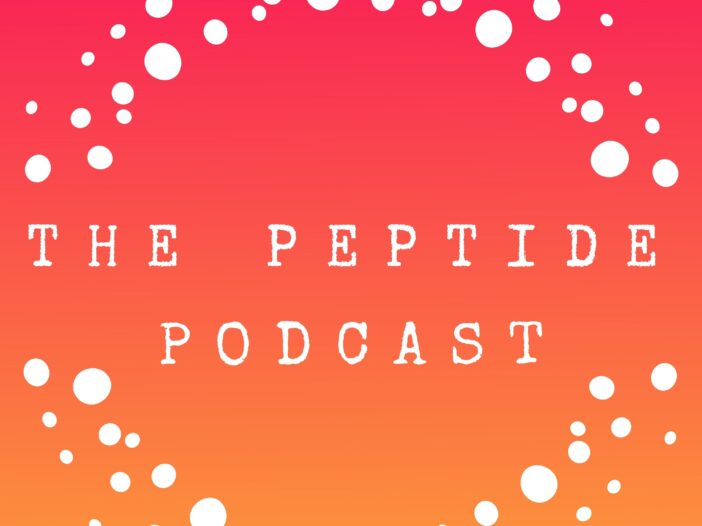
So, you’ve heard the rumors—“GLP-1s destroy your muscle!” But… is that actually true?
Think again. Today, we’re setting the record straight.
If you’re serious about real, healthy weight loss—and actually keeping your strength for the long haul—this episode is a must.
We’re diving into a long-overdue conversation about GLP-1 medications, metabolism, body composition, and what’s really happening to your muscle mass on these meds.
Because weight loss isn’t just about the scale—it’s about how you lose it. Let’s get into it.
Quick Basics — What Are GLP-1 and GIP/GLP-1 Medications?
Let’s start at ground zero. GLP-1 medications — like semaglutide (Wegovy and Ozempic) — are game-changers for weight loss and diabetes. They work by mimicking gut hormones that regulate appetite, blood sugar, and insulin release.
GLP-1 (glucagon-like peptide 1) slows down how fast your stomach empties, helps your body respond better to insulin, and most importantly — makes you feel fuller, longer.
Tirzepatide (Mounjaro and Zepbound), also hits GIP receptors — that’s glucose-dependent insulinotropic polypeptide — lending to more blood sugar regulation in some people.
What Happens to Your Body During Weight Loss?
No matter how you lose weight — whether it’s from keto, bariatric surgery, or GLP-1 meds — your body isn’t just burning fat.
It’s normal to lose a mix of fat mass and lean mass, which includes muscle, bone, and organ tissue. But the goal with any good weight loss plan is to maximize fat loss and minimize muscle loss.
The Myth: “GLP-1s Make You Lose All Your Muscle”
Here’s the truth: GLP-1 medications do NOT inherently destroy your muscle mass.
In fact, clinical studies have shown that GLP-1 medications, like semaglutide, have osteoblastic effects, meaning they can stimulate the activity of osteoblasts, the cells responsible for bone formation. This can potentially help improve bone density and support bone health. While the primary role of GLP-1 medications is to aid in weight loss and improve blood sugar control, these osteoblastic effects may offer additional benefits, especially in individuals at risk for osteoporosis or bone loss.
If you see muscle loss during GLP-1 therapy, it’s because of rapid overall weight loss and a lack of resistance training and protein — not because the medication is wasting your muscle.
It’s the same thing we see in ANY rapid weight loss — if you don’t stimulate your muscles and feed them the right building blocks, your body gets rid of them because it thinks you don’t need them.
Muscle is metabolically expensive. Your body is smart — if it thinks you’re not using muscle, it’s going to save energy and dump it. That’s biology — not the medication.
Why Protein and Resistance Training Are Non-Negotiable
If you’re on a GLP-1, your appetite is lower — which is great for fat loss, but it means you could accidentally under-eat protein if you’re not paying attention.
Protein is literally the raw material your body uses to maintain and build muscle. Protein also helps build and repair tissues and is essential for producing enzymes, hormones, and maintaining a healthy immune system. Without enough, your body will start to break down lean tissue to make up the difference.
And without resistance training (e.g., bodyweight exercises), your body assumes you don’t need the muscle anymore. Use it or lose it.
How to Protect (and Even Build) Muscle on GLP-1s
Here’s the simple formula:
- Prioritize protein: Aim for at least 0.8 to 1 grams per pound of body weight per day. Some need even more during active fat loss.
- Strength train 2–4 times a week: Focus on compound movements — think squats, deadlifts, presses, pulls, push ups, lunges, planks, and wall sits.
- Don’t fear the scale: Remember that as you lose fat and build muscle, the number might not drop as fast — but your body composition is improving (e.g., reduced body fat, more defined muscles, improved waist circumference, increased energy and strength, and don’t forget improved cardiovascular health).
- Think long-term: It’s not just about losing weight — it’s about keeping a strong, healthy, metabolically active body. THIS is what helps maintain weight loss.
Making sustainable lifestyle changes can be challenging, but they are the most important choice you can make when it comes to losing weight and improving your metabolism in the long run. The goal isn’t just weight loss — it’s fat loss while preserving and strengthening lean mass.
It’s important to remember that GLP-1s are a powerful tool, but they aren’t a magic. You still have to partner with your body — feed it well, move it wisely, and respect the incredible machine it is.
Strong, lean, metabolically active — that’s the future we’re building, not just smaller bodies.
Thanks again for listening to The Peptide Podcast. If this episode helped you rethink your game plan, do me a favor — share it with someone who’s starting their GLP-1 journey. And as always, have a happy healthy week!
Thanks for listening to The Peptide Podcast. If you found this episode helpful, please follow or leave a review. And if there’s a topic you’d like to hear more about, feel free to reach out—we’d love to hear from you. As always, have a happy, healthy week!
We’re huge advocates of elevating your health game with nutrition, supplements, and vitamins. Whether it’s a daily boost or targeted support, we trust and use Momentous products to supercharge our wellness journey.
Momentous only uses the highest-quality ingredients, and every single product is rigorously tested by independent third parties to ensure their products deliver on their promise to bring you the best supplements on the market.
Leave a Reply